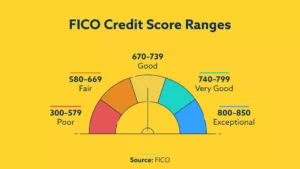 Consumers who have purchased a home know all too well the surprises that often come right at the end of the home-buying process.
Consumers who have purchased a home know all too well the surprises that often come right at the end of the home-buying process.
After what can turn out to be months of waiting, hassling and re-negotiating you finally get to the closing process and discover increased fees, costs and some time penalties added to your estimated closing costs.
Buying a home should be a joyful experience but all too often leaves consumers disappointed, frustrated and angry.
The reason behind the frustration is closing costs that were estimated at one amount then somehow skyrocketed to a much higher amount.
Some consumers are so frustrated that they walk away from the deal. This should never happen. Mortgage lenders who once kept consumers in the dark about costs until the end of the home-buying process can now face monetary penalties.
Mortgage lenders must now pay the difference when they lowball estimates of upfront mortgage costs. According to Bankrate, mortgage lenders are giving more accurate estimates because they must now pay the difference to homebuyers if costs are underestimated.
The new rule took effect January 1, 2010, under the Department of Housing and Urban Development in order to prevent last minute closing cost surprises. The rule is expected to save home-buyers money and ease the hassle of closing costs surprises.
What homebuyers can expect from the new rule:
Uniformity. Mortgage brokers and lenders are now required to use a 3-page document which estimates the total costs of the loan, including fees within 72 hours after a prospective borrower applies for a mortgage loan.
Transparency. No more hidden loan terms such as adjustable rate mortgage, balloon payments or pre-payment penalties. Should the loan contain any of these terms it must be clearly spelled out to the borrower. Any loan feature that could drive up costs must be disclosed.
Mortgage lenders are required to give borrowers a copy of the settlement costs (the HUD-1 form) at least one day prior to closing on the loan. Previously the settlement costs on the HUD-1 form could be totally different in costs from the good faith estimate given to borrowers earlier during the loan process.
The new HUD-1 includes a clear line-by-line comparison to the good faith estimate. Mortgage lenders are not allowed to increase their costs, such as origination and processing fees. Appraisal fees and title fees can increase no more than 10% than the fees on the good faith estimate previously provided to the borrower. But not all costs are subject to the 10% limit such as the borrower’s escrow account deposit, homeowner’s insurance and daily interest charges.
Outcome. As a result of the new regulations, Bankrate did a survey and found that good-faith estimates show closing costs rising by 36 % in 2010. They found the main reason for the increase is due to mortgage lenders giving more accurate estimates in order to avoid paying the difference if they underestimate costs. This is the first time mortgage lenders could be hit in the pocket for low-balling closing costs for home-buyers.
New York was the highest priced state with costs averaging $5,623, followed by Texas at $4,708, Utah at $4,605 and California at $4,406. Arkansas was the least expensive state, with costs averaging $3,007.

















